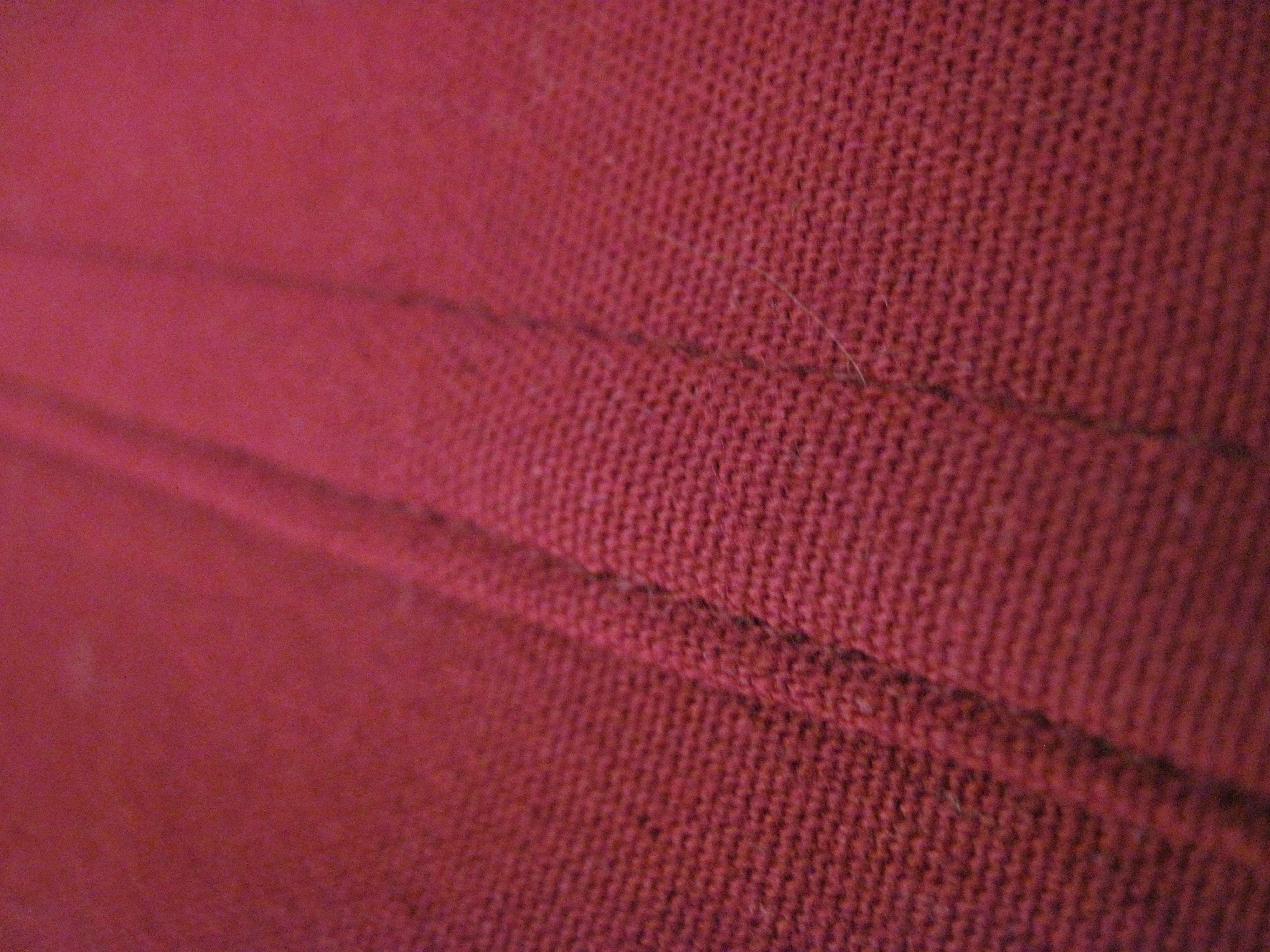If you've ever seen a pair of jeans, you know exactly what a flat-fell seam is. It's the seam that lies flat on your jeans, totally encased within itself. This seam is strong and sturdy, typically used on sports clothing or reversible garments. Some people call this the jean seam simply because it's used on almost every pair of jeans you'll ever buy. It's a good looking, professional seam. Though it looks complicated, it's actually as easy as any other enclosed seam. If you've ever sewn a bias bound seam, you'll be able to full off the flat-fell seam.
Unlike some of the other seam finishes, you actually have to know you're going to use this seam finish before you ever start your garment. This is because the raw edges of the seam have to appear on the outside of the clothing. To accomplish this, simply sew the item with wrong sides together instead of right sides together, but only on the seams where you want a flat-fell effect. If you're making jeans, you'd probably only do this on the side seams. The inseams and crotch seams are not usually created using this method. Check your favorite pair of jeans and you'll see exactly where the flat-fell is typically used. Of course, since you're making your own garment, you can use the flat-fell seam wherever you like.
Once you have your chosen seams on the outside of your garment, press both raw edges to one side. Usually you would press both edges toward the back of your garment, but the choice is yours. Just be consistent. After pressing, trim the lower seam allowance to ⅛". Fold the upper seam allowance around and under the lower seam allowance. You'll basically be folding the upper seam allowance in half and tucking the lower allowance inside it. Press again, then topstitch through all layers close to the fold, essentially sealing the seam allowances inside themselves. Topstitch once again close to the seamline just to make it all look pretty and that's your flat-fell seam.
This seam is excellent when you have to hide your seams completely, especially for those garments you want to lie flat against your skin. With this type of seam, after all, there are no seam allowances inside the garment to brush against you.
Welcome to Aislin’s Designs—a cozy corner for crafters who love sewing, knitting, and crochet. Here you’ll find patterns, project ideas, tips, and tutorials to inspire your next handmade creation. Whether you're a beginner or seasoned maker, there's always something new to stitch, knit, or hook. Grab your yarn, thread your needle, and let’s get creative together!
Items posted on the main page are available for purchase unless otherwise indicated. If you'd like to purchase an item shown, send me a message indicating which country you live in and I'll quote you a shipping price. All payments are processed through Paypal only. If you're looking for a custom item, let me know the specifics and I'll quote you a total price. Custom items typically take 6 weeks to produce after payment is received. Keep this in mind when asking for custom orders.
